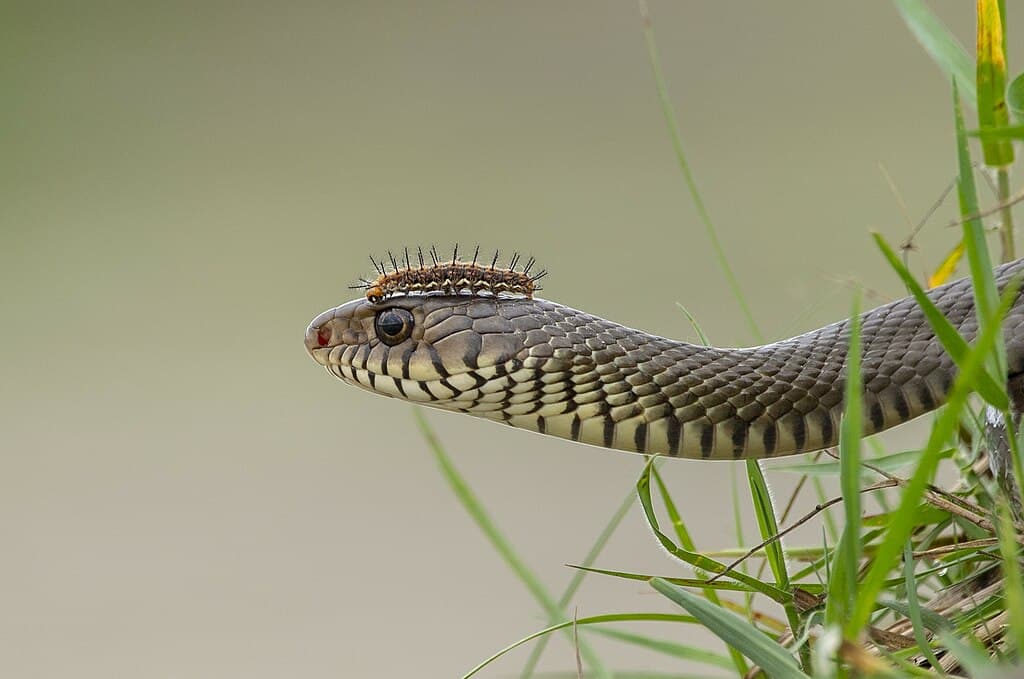It is normal to never know if you come across non-venomous snakes or venomous snakes in the wild sometimes. We talked about venomous snakes in Cambodia before, and we are doing the opposite today. It is good to know about the harmless ones so that you know that you are safe. Below are some of the most common non-venomous snakes in Cambodia that you will probably come across.
Asian Vine Snake (ពស់ខ្សែគោ)
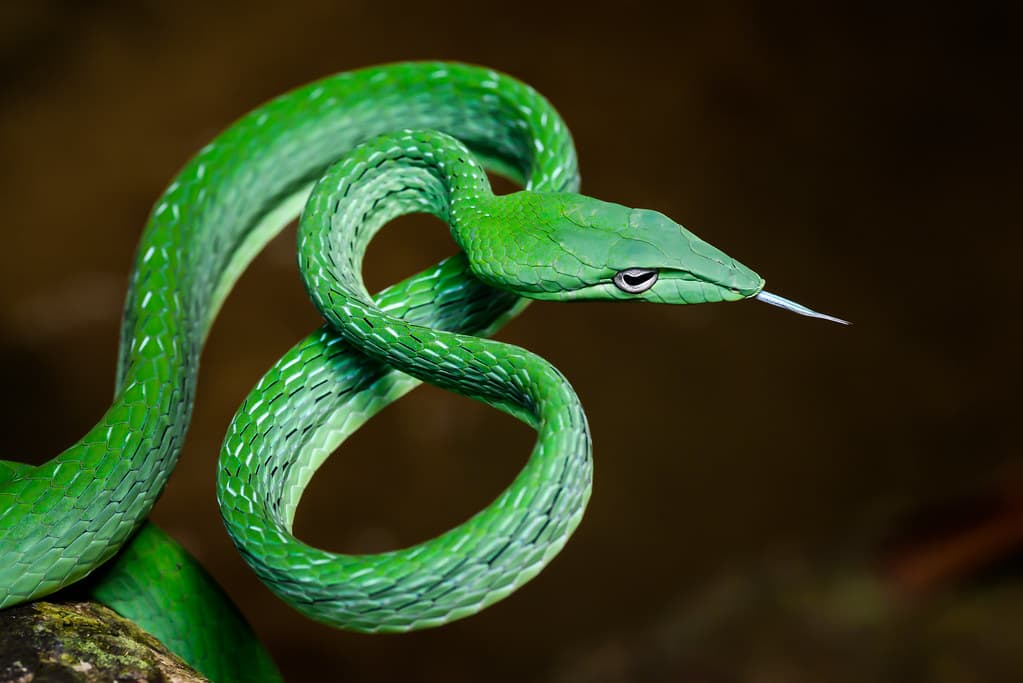
Asian vine snakes are one of the green snakes in Cambodia that many people usually mistake with the venomous pit vipers. An Asian vine snake has an elongated thin body with an extremely long tail and a sharply triangular-shaped head. It is usually green in color but some can also be a bit brown, gray, orange, or yellow. One of the most unique things about these snakes is their eyes. They have keyhole-shaped pupils and keen binocular vision that allow them to hunt successfully.
The thing about Asian vine snakes is that they are not exactly non-venomous but their venom is so mild it is harmless to humans. Their venom can cause paralysis to their prey such as frogs, lizards, and rodents by chewing the prey to release venom. These snakes are aggressive towards their prey but mild when prey is not around. Asian vine snakes are not popular pets as only advanced keepers can properly take care of them.
Burmese Python (ពស់ថ្លាន់តូច)
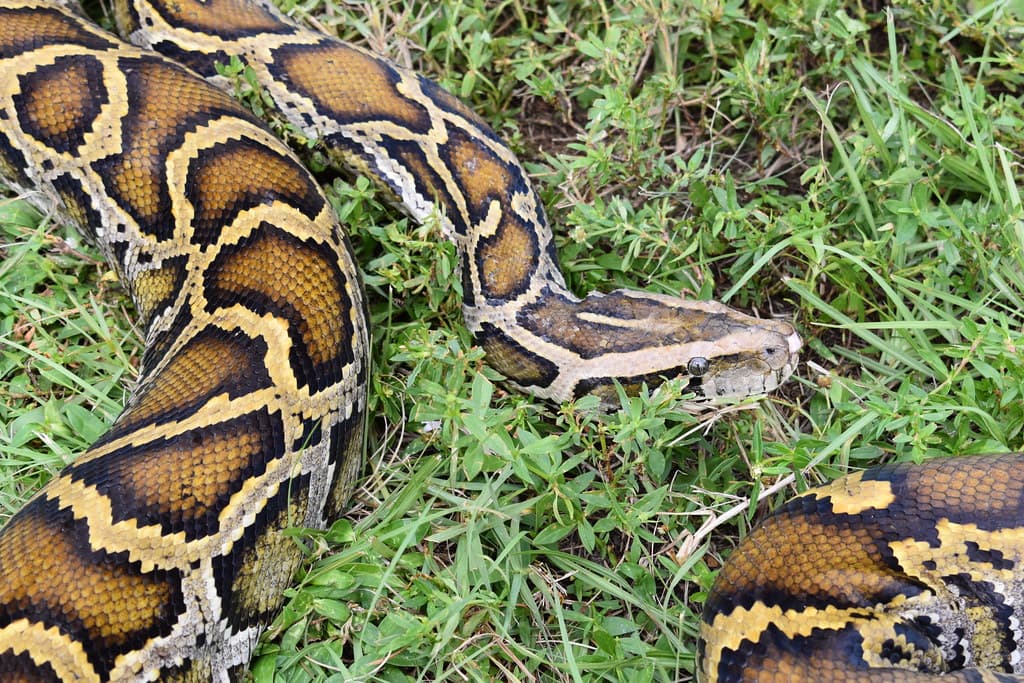
Normally, you usually see the brighter version of the Burmese python that is white and yellow in color. The regular Burmese pythons are dark-colored with brown blotches with a black border down the back. This python usually grows to around 5 meters or even up to over 7 meters long. They are excellent swimmers with the ability to stay in water for 30 minutes, and they are good climbers as well. These snakes need a permanent source of water so their habitats are near areas with water. Burmese pythons inhabit grasslands, jungles with open cleanings, marshes, river valleys, rocky foothills, swamps, and woodlands.
Elephant Trunk Snake (ពស់ប្រមោយដំរី)
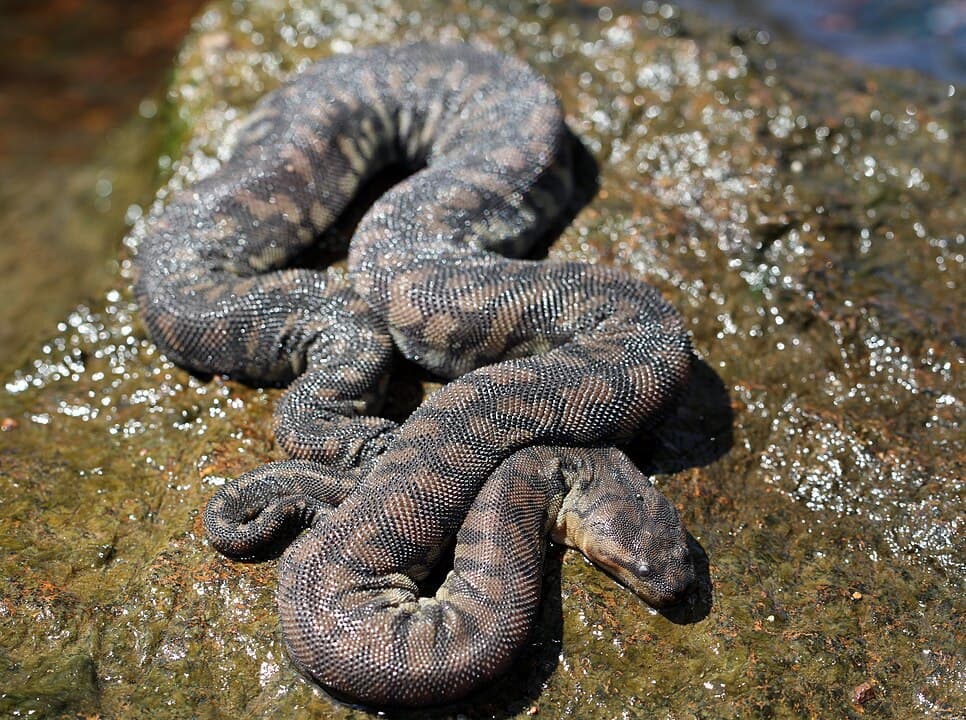
The elephant trunk snake is a non-venomous aquatic snake that has a very strange appearance. It has a wide and flat head that is as wide as its body, and its nostrils are on the top of its snout. The maximum length of this snake is around 2.4 meters, and females are bigger than males. One among the peculiar features of elephant trunk snakes is the baggy and loose skin that it has. At the same time, its skin is covered with small rough adjacent scales and it has no ventral scales as well.
As an aquatic snake, it is fully adapted to live underwater so leaving the water can cause serious injury. That is because its body cannot support its weight out of water which can cause internal organ damage. It can hold its breath for up to 40 minutes before having to surface the air, and it rarely goes on land. Elephant trunk snakes inhabit estuaries, lagoons, rivers, and streams though they prefer freshwater and brackish environments. Since they are ambush predators, they prey on amphibians and fishes by folding their bodies firmly around the prey.
Golden Tree Snake (ពស់តុកកែ)
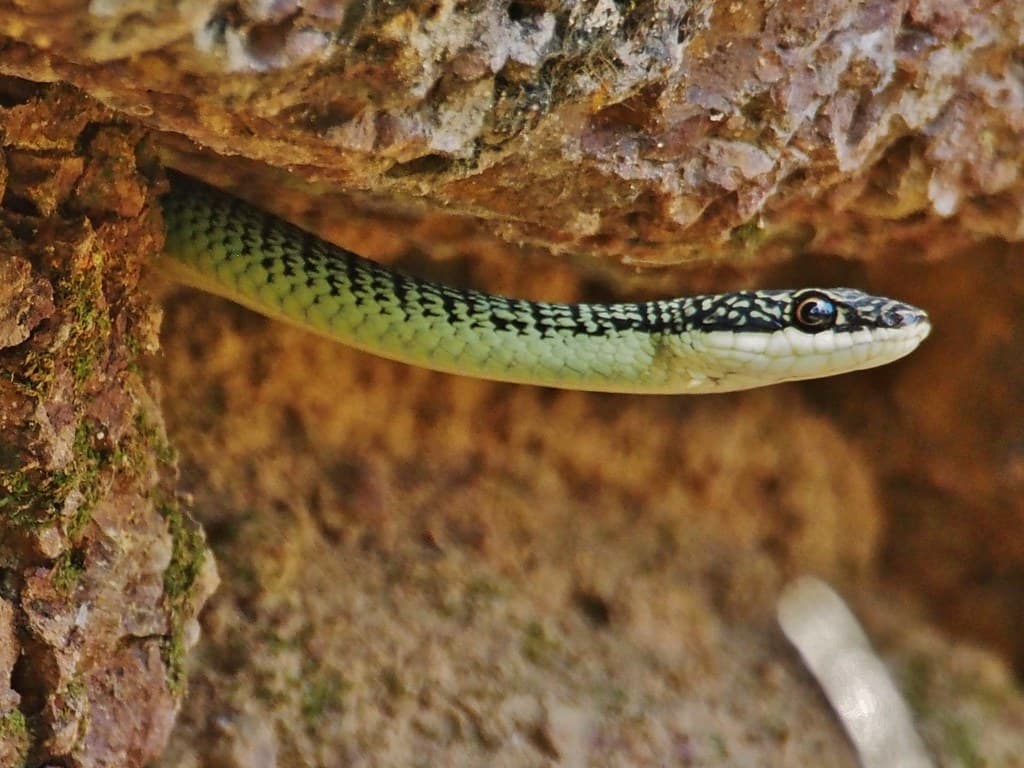
The name of this non-venomous snake in Cambodia literally means “gecko snake”, mainly because it usually feeds on geckos. A golden tree snake is usually green in color with black cross-hatching and yellow or gold accents. Its body is slender, and it has a flattened head with a constricted neck and blunt nose. In the wild, their gliding ability allows them to move from tree to tree with ease. Within human households, they just use their agility to capture prey geckos. Golden tree snakes are mildly venomous, and they have to chew the prey to deliver the venom. Simply put, these snakes are not dangerous to humans at all.
Green Cat Snake (ពស់ឆ្មាបៃតង)
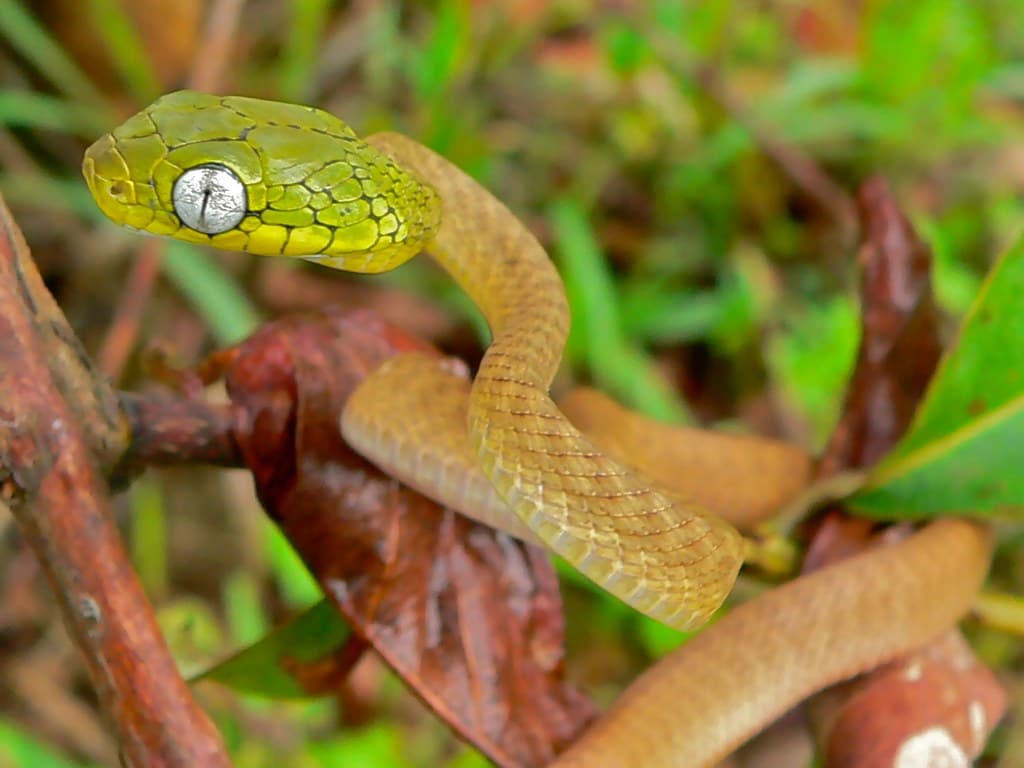
Seeing a green snake can be challenging in Cambodia, some green snakes are non-venomous while some are extremely venomous. As for green cat snakes, they are quite docile and harmless. A green cat snake is green or green mixed with bluish or grayish, and they have large eyes. This snake inhabits primary and secondary forests as well as coastal forests and montane zones. Green cat snakes are arboreal but it is also common to find them on the ground. They do have fangs but the venom is so mild it only works on small prey. Green cat snakes paralyze small prey such as birds, frogs, lizards, rodents, and other snakes.
Kukri Snake (ពស់គុកគ្រី)
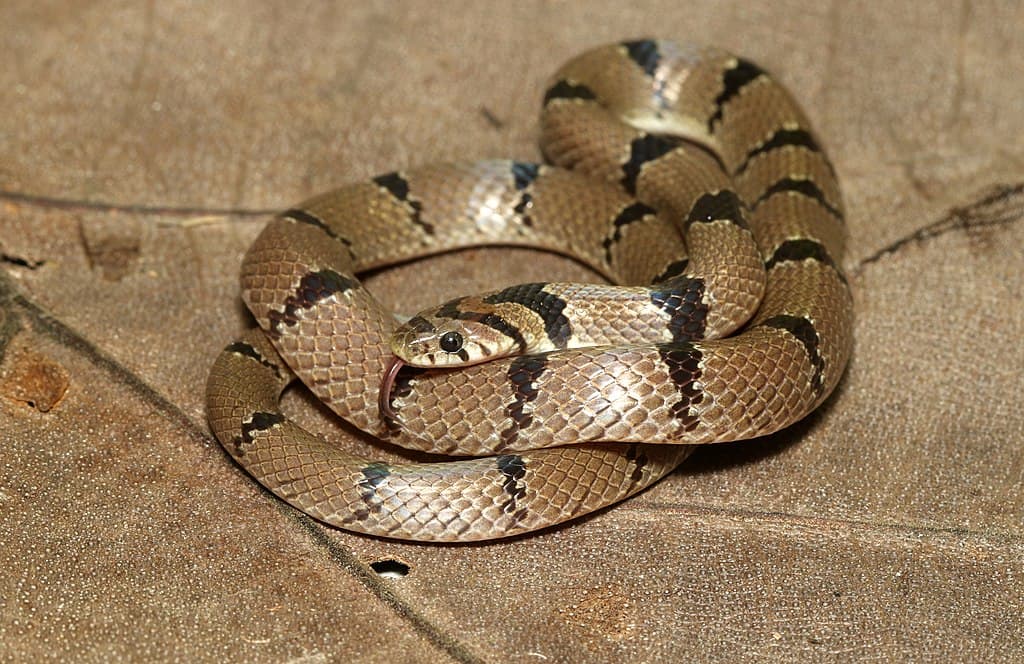
Kukri snake is actually one of the new snake species found in Cambodia in 2021. It got its name from its appearance which is similar to the kukri knife, a Nepalese knife. A kukri snake has a set of enlarged teeth placed in the back of the upper jaws and curved hind teeth. This teeth arrangement is specially adapted for their main diet of eggs. The teeth cut open the eggs as the snake swallows them to allow for easier digestion. Apart from the eggs of birds and reptiles, they also feed on frogs, lizards, and small rodents. Kukri snakes inhabit disturbed habitats and lowland forests including rice paddies and secondary scrubs.
Oriental Rat Snake (ពស់ព្រៃកណ្តុរ)
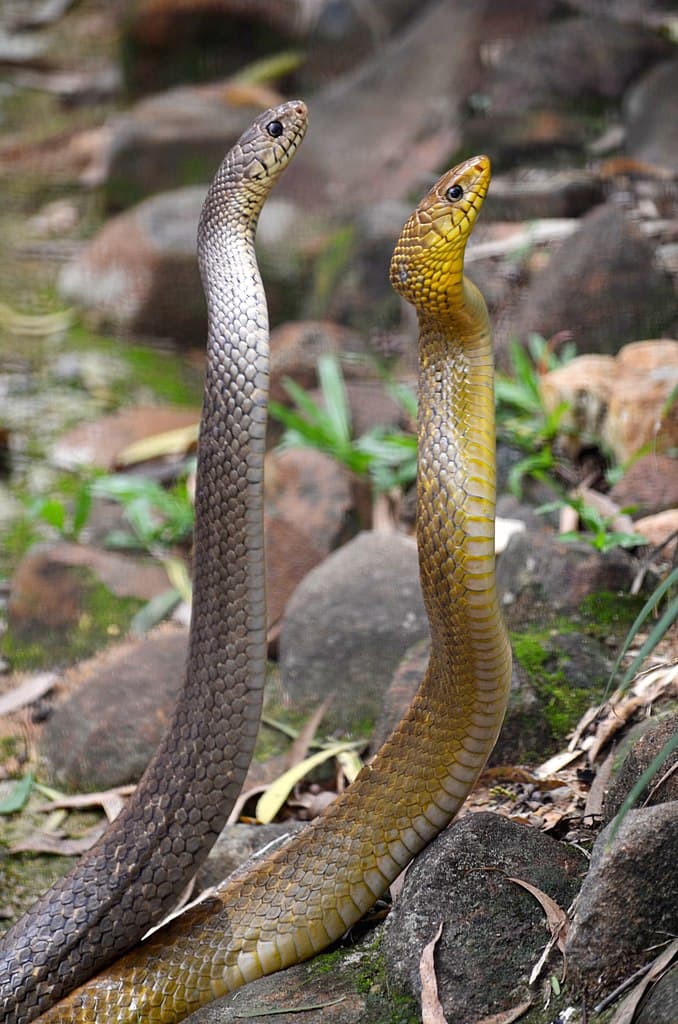
Oriental rat snakes are large, growing to a length of 1.5 to 1.95 meters while some can exceed 2 meters. Coming across one of them can be quite frightening though they are non-venomous snakes. However, adults can emit growling sounds and inflate their necks when threatened which is similar to king cobra. Oriental rat snakes inhabit farmland, forest floors, rice paddies, suburban areas, and wetlands where they prey upon amphibians, birds, mammals, and small reptiles. Oriental rat snakes have no natural predators as they are fast-moving, quick to react, and wary. However, humans have been hunting them in some areas for meat and skin.
Oriental Wolf Snake (ពស់ចចក)
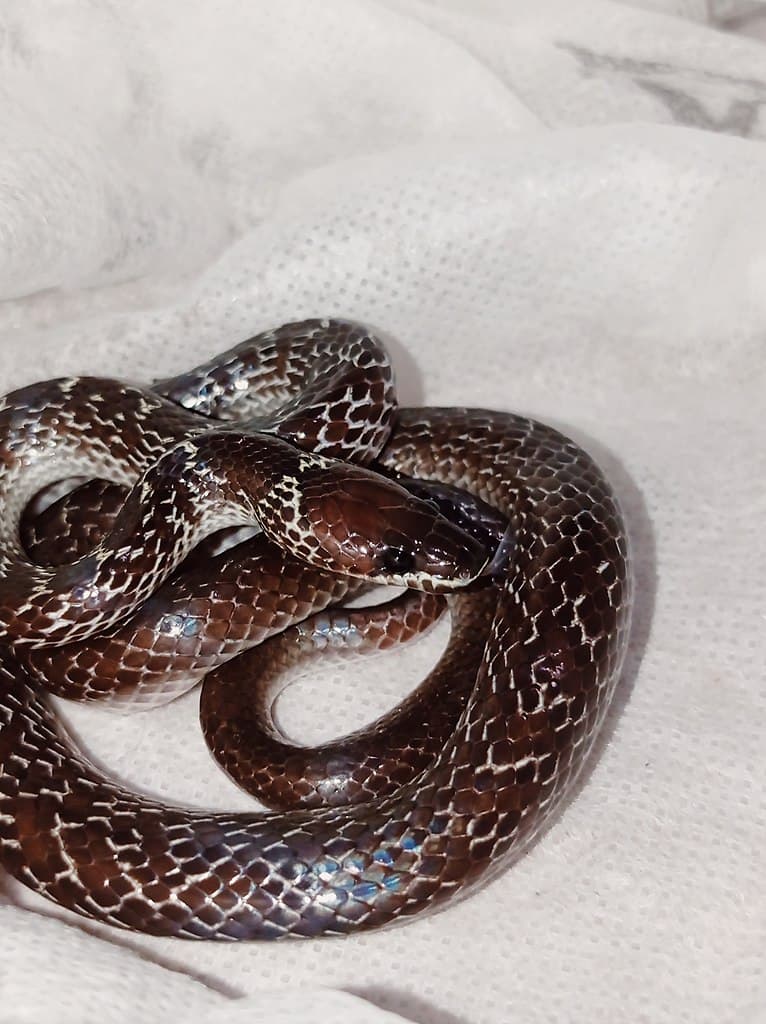
Sounds like a scary snake but actually non-venomous, oriental wolf snakes got their name because of their enlarged front teeth. With fangs like that, of course, they bite but the venom cannot harm humans at all. These snakes only bite when handled or picked up, and their bite only results in pain and swelling. When threatened, they will also shake the tip of their tail like a rattlesnake does. Oriental wolf snakes feed on frogs, skinks, small frogs, and small lizards. You will encounter these snakes in gardens, plantations, suburban, tropical rainforests, and urban habitats.
Red-Tailed Green Rat Snake (ពស់ធាងត្រាវ)
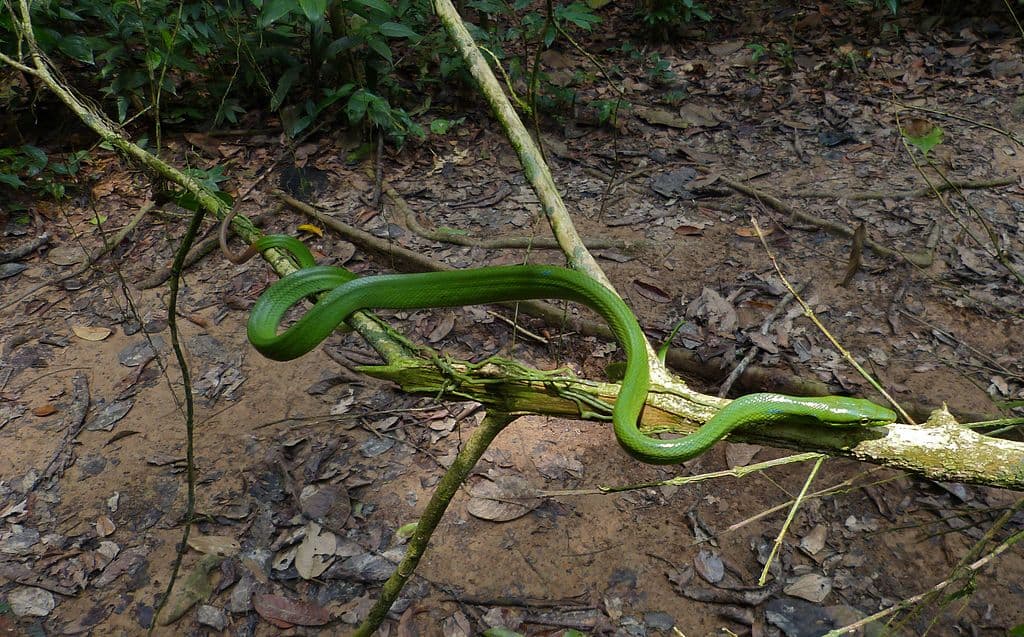
At a glance, a red-tailed green rat snake looks exactly like the extremely venomous white-lipped pit vipers. It is a robust snake with wide smooth scales on its belly that allow for climbing trees and across branches. As for the scales on the back, they are bright green or light green with a black net-like pattern. One of the most distinctive parts is the red tail which is usually brown. They are native to Southeast Asia where they inhabit rainforests, rural gardens, and shrublands. As arboreal snakes, they live and spend their lives in trees and tree cavities; rarely descending to the ground. Red-tailed green rat snakes feed on bats, birds, bird eggs, and lizards by catching them mid-air. Since they are non-venomous snakes, they kill their prey by constriction to suffocate the victim.
Reticulated Python (ពស់ថ្លាន់តូច)
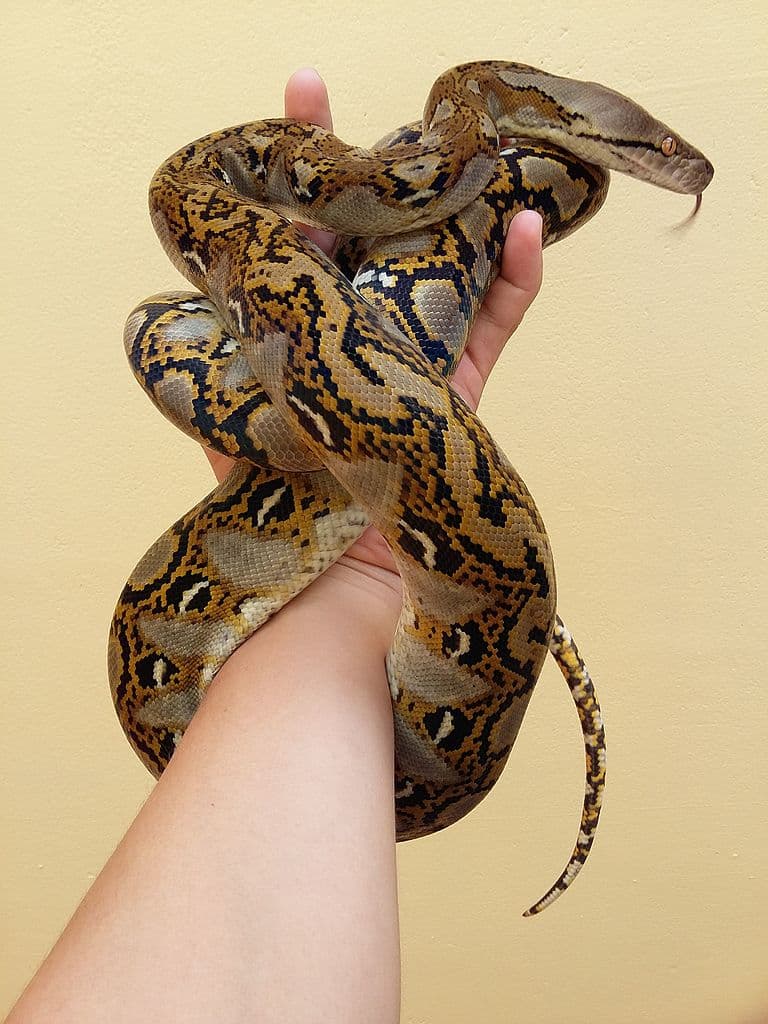
As we all know, reticulated pythons are the longest snakes in the world, and they are also non-venomous snakes. These pythons live in grasslands, rainforests, and woodlands where lakes and streams are nearby. They are excellent swimmers, being able to swim at long distances for food or new habitats. A reticulated python has smooth dorsal scales yet strong enough to keep prey in place. Reticulated pythons are ambush predators that wait for prey to come close before seizing it within a strike. Then it coils the prey before killing it by constriction.
Though they are non-venomous snakes, reticulated pythons are still dangerous to humans. They are one of the few snakes that prey on humans as their jaws are wide enough to swallow one. Despite being dangerous, many people still love to have them as pets. And on many occasions, these pet pythons strangled or successfully killed their owners.
Sunbeam Snake (ពស់ប្រេង)
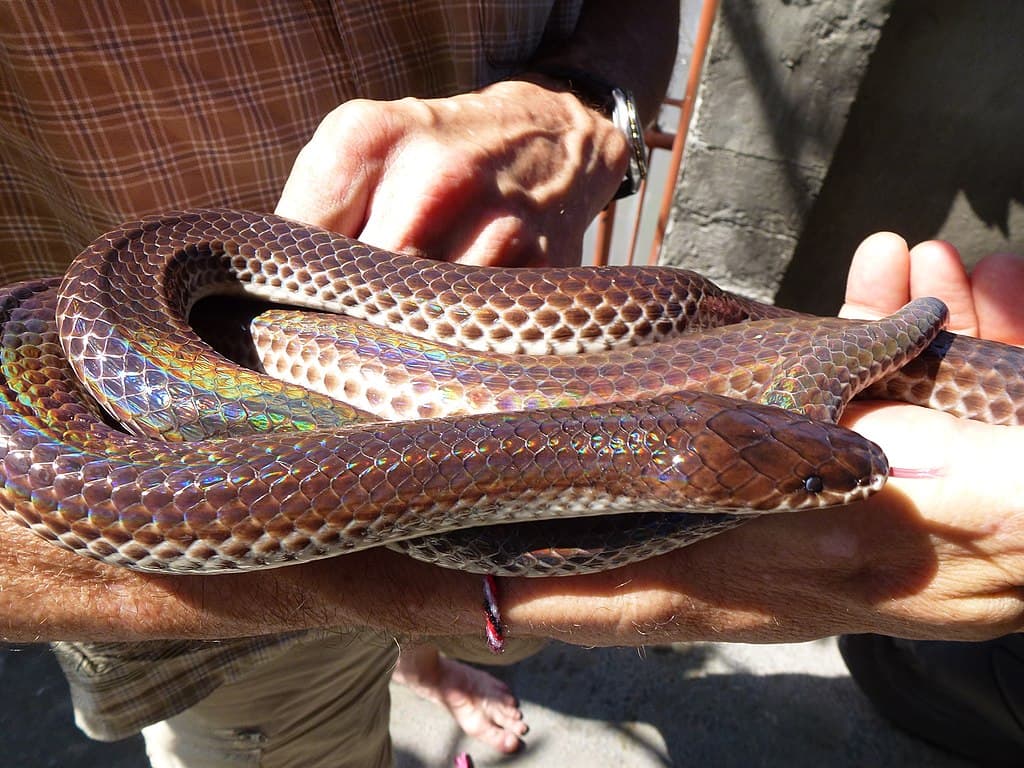
Being one of the non-venomous snakes in Cambodia, sunbeam snakes are constrictors. These snakes kill their prey by suffocation in their muscular coils, and the common prey is frogs, reptiles, and small mammals. However, they do bite if handled roughly though the bite is not venomous. Sunbeam snakes live in open areas such as forest clearings, gardens, parks, and sometimes rice paddies.
Tentacled Snake (ពស់ត្រាវ)
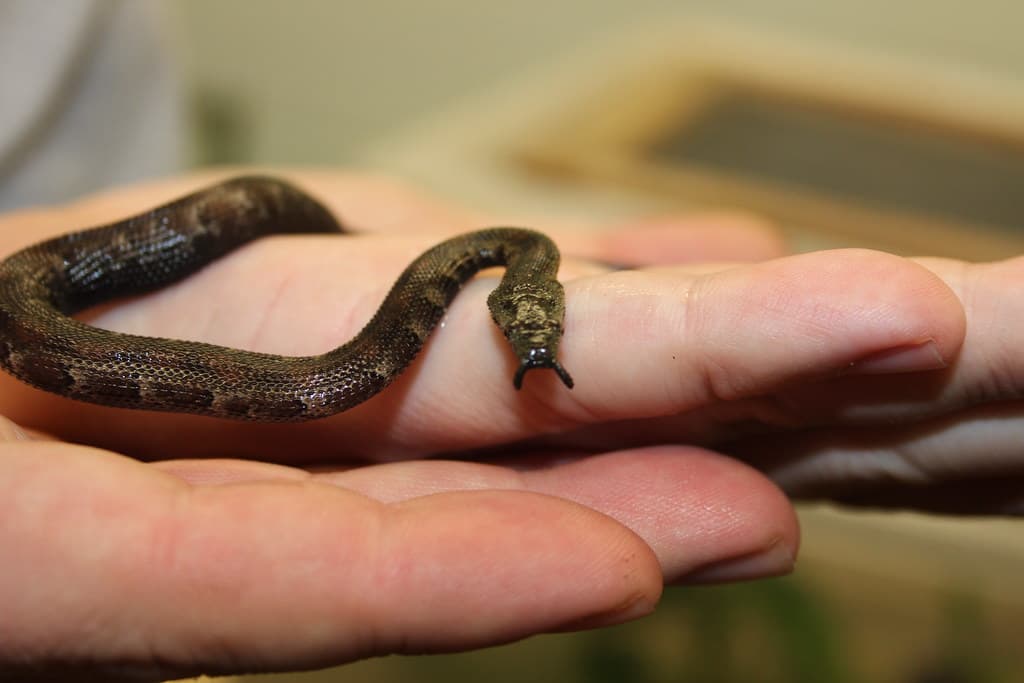
This is an aquatic snake species that is native to Southeast Asia, and it has two tentacles on its snout. Simply the reason why it got its name, and these tentacles show to have mechanosensory function. A tentacled snake can be either blotched or striped, depending on what phase it is born with. However, both phases range from dark gray or brown to a light tan. As an aquatic snake, it spends its entire life in the murky water of lakes, rice paddles, and slow-moving streams. They do have venomous fangs but they are not dangerous to humans due to the small fang size.
Besides the non-venomous snakes above, there are some more that you will probably come across:
- Buff Striped Keelback
- Checkered Keelback
- Mangrove Snake
- Marbled Cat-Eyed Snake
- Radiated Ratsnake
- Red-Tailed Pipe Snake
Related Post: The Most Venomous Snakes In Cambodia
